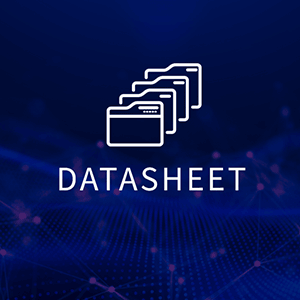Software vulnerabilities, often seen as mere technical glitches, have the potential to escalate into significant security breaches, which can affect not just your enterprise but also your stakeholders and customers. With the rapid evolution of cyber threats, organizations are in a race against time to identify and mitigate vulnerabilities. That’s why we’ve created Software Vulnerability Manager (SVM) and Software Vulnerability Research (SVR), designed to be at the forefront of this battle.
The ever-present threat landscape
Every day, countless new vulnerabilities are discovered, adding to an already extensive list. If left unaddressed, these vulnerabilities can serve as open doors for cybercriminals—leading to data breaches, financial losses and tarnished reputations. The challenge for your organization is twofold: you must first detect these vulnerabilities and then determine which ones pose the most significant threat.
The SVM and SVR paradigm: Beyond mere detection
While many tools in the market offer vulnerability detection, SVM and SVR go several steps further. They don’t just identify; they analyze, prioritize and offer remediation insights. By leveraging vast databases and real-time threat intelligence, these tools provide a granular view of the threat landscape, ensuring that you’re always several steps ahead of potential attackers.
A better approach to vulnerability prioritization
One of the standout features of SVM and SVR is their sophisticated vulnerability prioritization mechanism. Given the sheer number of vulnerabilities that you have to deal with, it’s impractical—if not impossible—to address them all simultaneously. This is where SVM and SVR’s prioritization matrix comes into play:
- Prevalence: This metric focuses on the number of systems a particular vulnerability affects. The broader its reach, the higher its priority
- Asset sensitivity: This allows you to evaluate the potential fallout if a system were to be compromised. Systems that house critical data or are integral to business operations are given higher priority
- Criticality: This is a measure of the potential damage a vulnerability can cause if exploited
- Threat intelligence: Perhaps the most advanced of the metrics, this uses a combination of artificial intelligence, machine learning and human expertise to determine the likelihood of a vulnerability being exploited in the wild
The broader implications of SVM and SVR in modern IT security
SVM and SVR aren’t just tools; they represent a shift in how modern organizations approach IT security. By offering a holistic view of your threat landscape, they allow you to transition from reactive security measures to proactive strategies. This shift is crucial in today’s fast-paced digital world, where threats evolve rapidly and the window for remediation is often narrow.
Software Vulnerability Management
The way to beat software vulnerabilities is to stay ahead of them. Addressing windows of risk is critical for reducing the odds of attacks and staying secure.
The road ahead with SVM and SVR
The choices you make regarding your IT security will shape the future of your organization. With their comprehensive approach to vulnerability management, SVM and SVR offer a clear path forward. They represent the convergence of technology and expertise, ensuring your organization can navigate the treacherous waters of cyber threats with confidence and foresight.
Elevate your IT security game by discovering the power of SVM and SVR today.







